As winter blankets the world in a frosty embrace, your outdoor garden might resemble a scene from a botanical survival thriller (or horror). The once lush and vibrant plants now stand as determined sentinels, facing the icy challenges of the season. The question on your mind: "How can I keep these green companions alive during the cold months?"
You wonder if there's a whimsical yet pragmatic way to ensure your beloved outdoor flora not only endures winter - but thrives in it.
Well, hold onto your gardening gloves because we're about to embark on an enlightening journey (you might need more than the gloves since we’re discussing actual winter gardening).
In this article, we'll uncover the secrets and strategies of how to keep plants alive in winter outside. No more botanical mysteries or cold-weather conundrums – just practical advice, data-backed insights, and the knowledge you need to transform your garden into a thriving winter wonderland.
Winter Woes: Overcoming Outdoor Plant Challenges
Winter presents plant lovers with a series of formidable challenges. Here are some of the most common hurdles you may encounter when trying to keep your outdoor plants alive during the cold season:
1. Freezing Temperatures
Winter can bring extreme cold, with temperatures dropping as low as -40°F (-40°C) in certain regions. Such freezing conditions can lead to frost damage, causing plant cells to rupture. Tender plants like tomatoes (Solanum lycopersicum) and basil (Ocimum basilicum) and most of our beloved perennials and seasonal flowers are particularly susceptible, making it crucial to understand your local frost risk.
2. Drying Winds
The winter months can usher in strong winds, sometimes exceeding 50 mph. These winds can swiftly desiccate plant leaves, with evergreens like boxwood being especially vulnerable. To combat wind-related issues, many gardeners rely on windbreaks made from materials like burlap or wooden screens.
3. Snow Accumulation
Snowfall can vary in weight and moisture content. Wet snow can be heavy, weighing around 12-20 pounds per cubic foot, while dry snow is lighter, at roughly 3-5 pounds per cubic foot. The accumulation of heavy snow can lead to bent or broken branches, particularly affecting coniferous trees like the Colorado blue spruce (Picea pungens). Additionally, snow accumulation can create a humid microenvironment that fosters mold and disease, such as snow mold.
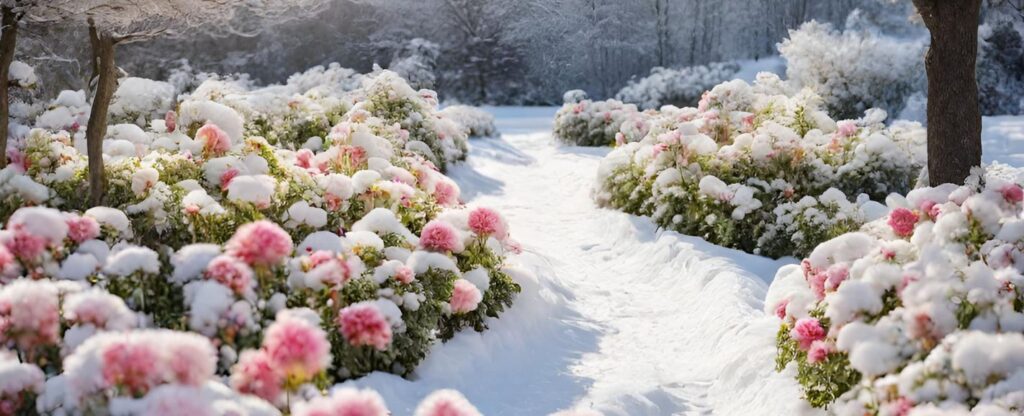
4. Pest Persistence
Certain pests, including spider mites and aphids, remain active even in the winter. When transitioning indoor plants back outdoors in spring, it's vital to inspect them for any pests that may have taken shelter indoors during the colder months. Regular monitoring ensures the timely detection and treatment of potential infestations.
5. Limited Sunlight
As winter progresses, daylight hours shorten significantly, sometimes to as few as 8 hours a day in certain regions. This reduced sunlight can hinder the photosynthesis process in plants, impacting their growth. Selecting shade-tolerant plants like hostas or ferns (Polypodiopsida) for areas with limited winter sunlight is a strategic choice.
In some cases, supplemental lighting, such as grow lights, may be necessary for indoor plants to maintain their vitality - especially cacti species, who are addicted to sunlight.
6. Soil Moisture Fluctuations
Winter precipitation can saturate the soil, increasing the risk of root rot, especially in plants like rhododendrons. Adequate soil drainage is essential to prevent waterlogged roots, and the application of mulch helps maintain consistent soil moisture levels throughout the season.
7. Fungal Infections
Winter's cold and damp conditions can encourage the growth of fungal diseases like powdery mildew (Erysiphales) and rust (Pucciniales). These diseases can affect a range of plants, including roses - a perennial favorite of numerous plant lovers. Preventive measures, including the application of appropriate fungicides, may be necessary for susceptible plants.
8. Inadequate Insulation
Some plants, such as pansies and petunias, may require additional insulation during winter to protect them from harsh conditions. Gardeners often use plant covers, cloches, or cold frames to provide this extra layer of protection, ensuring the plant's survival during the colder months.
These specific challenges highlight the diverse set of issues that plant lovers may face during the winter season. Understanding the nuances of each challenge is essential for effective winter plant care. Stay tuned for the upcoming section, where we'll explore solutions to address these issues.
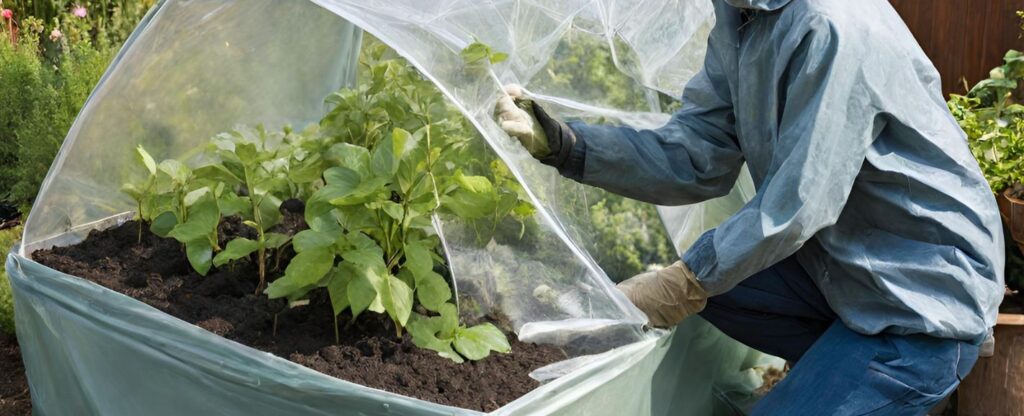
Essential Steps to Guarantee Plant Survival
It's a crisp winter morning, and you step into your garden, determined to ensure your outdoor plants endure and thrive during the cold season. You have your gloves on, and the excitement of transforming your garden into a winter wonderland fills the air.
Now, let's embark on this horticultural journey with our list of essential steps to guarantee plant survival through winter.
Step 1: Understanding Plant Hardiness
Plant survival in winter begins with understanding the concept of plant hardiness zones. These zones, typically marked on gardening maps, delineate regions based on their average annual minimum temperatures.
By identifying the hardiness zone of your region, you gain invaluable insights into which plants are likely to thrive there. It's like having a personalized winter plant selection guide, helping you choose the right plants that can withstand the specific winter conditions of your area.
In the United States, these zones are divided into specific categories based on the average annual minimum temperatures. Here's a breakdown:
- Zone 1 (-60 to -50°F): This is the coldest zone, found primarily in Alaska. Plants that thrive here need to withstand extremely low temperatures.
- Zone 2 (-50 to -40°F): Covering parts of Alaska, the northernmost regions of the contiguous states, and high mountain areas, this zone requires plants that can endure frigid winters.
- Zone 3 (-40 to -30°F): Extending into the upper Midwest and the northern parts of the country, this zone still experiences severe winters.
- Zone 4 (-30 to -20°F): Encompassing regions like the northern Midwest, New England, and mountainous areas, this zone faces cold winters with moderate snowfall.
- Zone 5 (-20 to -10°F): Covering a broad swath of the northern United States, this zone experiences cold winters, but it's suitable for a wide range of plants.
- Zone 6 (-10 to 0°F): This zone includes areas from the Midwest to the mid-Atlantic states, with milder winters and a longer growing season.
- Zone 7 (0 to 10°F): Found in the southern United States, this zone experiences mild winters and a longer growing season.
- Zone 8 (10 to 20°F): Covering the southernmost states and parts of the West Coast, this zone enjoys mild winters, making it suitable for a variety of plants.
- Zone 9 (20 to 30°F): This zone includes regions of Florida, southern Texas, and the desert Southwest, with mild winters and a lengthy growing season.
- Zone 10 (30 to 40°F): Found in southern Florida and Hawaii, this zone boasts warm winters and tropical conditions.
- Zone 11 (above 40°F): Hawaii and a small portion of the continental U.S. territories, as well as Puerto Rico and the Florida Keys, experience consistently warm temperatures, making them ideal for tropical plants.
Understanding your specific hardiness zone is crucial for choosing plants that can thrive in your region's unique winter conditions. This knowledge empowers you to make informed selections and create a garden that flourishes even in the face of winter's chill.

Step 2: Selecting the Right Plants
Once you've grasped the significance of hardiness zones, the next crucial step is selecting winter-hardy plants for your outdoor garden. Choosing winter-hardy plants for your outdoor garden is not just a matter of preference; it's a practical necessity. Here's why it matters:
- Survival in Harsh Conditions: Winter-hardy plants are equipped to endure the freezing temperatures, snow, and frost that winter brings. They can withstand the challenges that would otherwise spell disaster for less cold-resistant species.
- Reduced Maintenance: Winter-hardy plants typically require less intervention and maintenance during the cold months. This translates to less work for gardeners and a higher chance of success in keeping your garden healthy.
- Long-Term Investment: Investing in winter-hardy plants ensures the longevity of your garden. You'll enjoy the benefits of these resilient plants for seasons to come, making it a sustainable choice for your outdoor space.
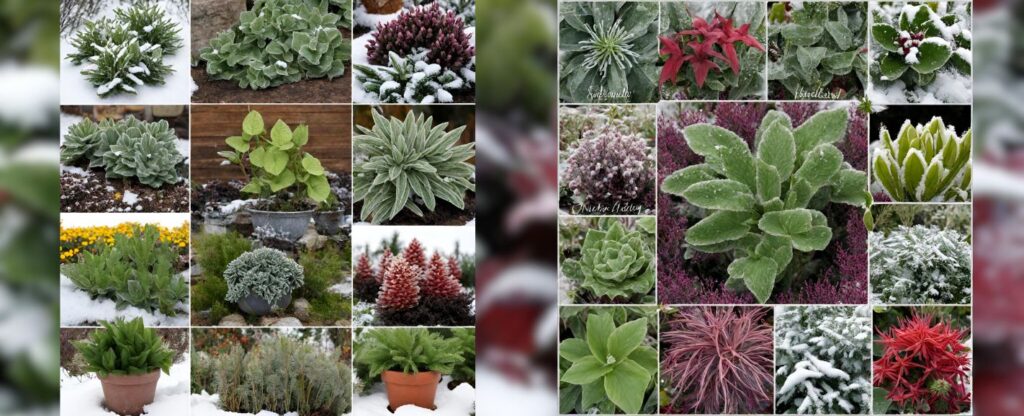
Winter Warriors: Plants Proven to Endure Harsh Colds
In addition, here are some of the undisputed champions among the winter warriors:
1. Winter Jasmine (Jasminum nudiflorum)
This deciduous shrub graces your garden with bright yellow flowers during the coldest months, adding a touch of warmth to the winter landscape.
2. Witch Hazel (Hamamelis spp.)
With unique spidery blooms in shades of yellow, red, or orange, witch hazel is a winter gem that defies the cold.
3. Hellebore (Helleborus spp.)
Known as the Christmas or Lenten rose, these evergreen perennials bloom when little else does, showcasing charming, downward-facing flowers.
4. Winterberry Holly (Ilex verticillata)
Adorned with vibrant red berries, this deciduous holly species adds a pop of color to your winter garden, attracting birds and adding festive cheer.
5. Siberian Iris (Iris sibirica)
As a hardy perennial, it boasts beautiful, delicate blooms that can endure temperatures as low as -40°F (-40°C).
6. Snowdrops (Galanthus spp.)
These petite, white flowers are among the earliest to bloom in late winter or early spring, signaling the end of winter's grip.
7. Red Twig Dogwood (Cornus sericea)
This deciduous shrub's fiery red stems provide a striking contrast against the snowy backdrop of winter.
8. Ornamental Grasses
Varieties like Feather Reed Grass (Calamagrostis x acutiflora) and Blue Oat Grass (Helictotrichon sempervirens) offer elegant texture and movement throughout winter.
Proper Watering Practices
Winter brings unique challenges when it comes to watering your outdoor plants. Understanding how to water effectively during this season is essential for their survival and health. Here's what you need to know.
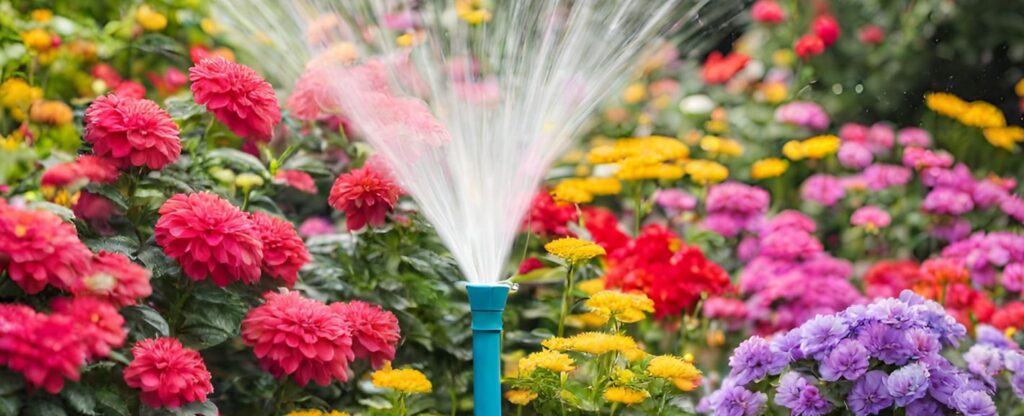
1. Reduced Evaporation Rates
In winter, evaporation rates are significantly lower due to the colder temperatures. This means that water lingers longer in the soil, and plants lose moisture more slowly. As a result, you'll need to adjust your watering routine to accommodate these reduced evaporation rates.
2. Watering Frequency
One common mistake during winter is overwatering. When temperatures drop and the ground remains cold and wet for extended periods, overwatering can lead to root rot and other moisture-related problems. To avoid this, water less frequently but more deeply. Allow the soil to dry slightly between waterings, ensuring that the top few inches are dry before adding more moisture.
3. Morning Watering
Try to water your plants in the morning when temperatures are slightly higher. This allows the soil to absorb moisture during the day, reducing the risk of freezing at night. Watering in the afternoon or evening can leave plants vulnerable to frost damage.
4. Water at the Base
Aim to water plants at their base, avoiding wetting the foliage. Wet leaves in freezing temperatures can lead to frost damage and disease. Use a watering can or a soaker hose for precise delivery at the root zone.
5. Monitor Soil Moisture
Regularly check the soil moisture level by sticking your finger a few inches into the soil. If it feels dry at that depth, it's time to water. Be cautious not to rely solely on a fixed watering schedule, as the moisture needs of your plants can vary based on weather conditions.
Protecting Plants from Frost and Wind
When frost and biting winds threaten your garden, it's crucial to implement protective measures to shield your plants from harm.
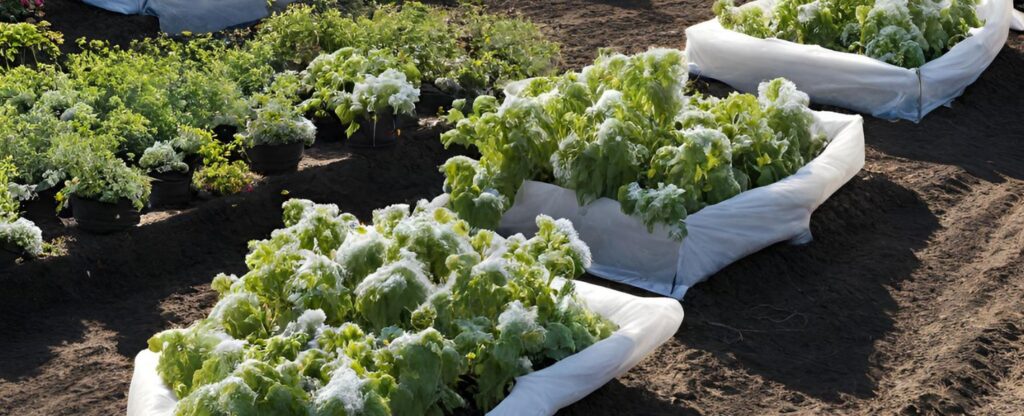
I. Frost Blankets and Row Covers
These lightweight, breathable fabrics are designed to insulate plants from frost while allowing sunlight and air to pass through. Drape them over your plants, securing the edges with stakes or rocks. Ensure the cover reaches all the way to the ground, creating a cozy cocoon for your plants. Be sure to remove them during the day to allow for proper ventilation and sunlight.
II. Mulch
Mulch serves as a natural insulator, protecting plant roots from extreme temperature fluctuations and frost. Apply a layer of mulch around the base of your plants, covering the soil. We’ll explain this concept into detail a bit further down this article.
III. Windbreaks
Windbreaks are physical barriers, such as fences, walls, or even burlap screens, strategically placed to block or divert harsh winds. Position windbreaks on the windward side of your garden, creating a sheltered area where plants can thrive. Ensure they are tall enough to redirect the wind over the top of your plants.
IV. Watering Before Frost
Yes, if you think this was the opposite of what you should do before the arrival of frost - it’s not. Moist soil retains heat more effectively than dry soil, helping to moderate temperature fluctuations. Water the soil around your plants a day or two before an expected frost. Ensure the ground is adequately moist but not soggy.
V. Relocate Potted Plants
Potted plants are more vulnerable to frost because their roots haven’t spanned as deeply as the ones in your garden. So, consider moving them to a sheltered location, such as a covered porch or a greenhouse. If moving them indoors is not an option, group them together to create a microclimate that's less susceptible to frost.
VI. Heated Cables or Lights
These can provide localized warmth to prevent frost damage. Place heating cables or lights near sensitive plants, following the manufacturer's instructions for safe usage. Be cautious to avoid overheating or fire hazards.
VII. Pruning and Deadheading
Regularly inspect your plants for frost-damaged or dead growth and prune them away. This also encourages new, healthy growth.
VIII. Cloches and Cold Frames
Cloches are bell-shaped glass or plastic covers that protect individual plants from frost. Cold frames are larger structures with transparent tops that create a small greenhouse environment. Both can be placed over plants to provide warmth and protection during the coldest months.
IX. Anti-Desiccant Sprays
These sprays create a protective film on plant leaves that reduces moisture loss, helping to prevent drying out due to winter winds. Follow the product instructions for application.
By incorporating these protective techniques into your winter gardening routine, you can safeguard your plants from the ravages of frost and wind, ensuring their well-being throughout the winter season. Now, let's move on to the separate paragraphs for mulching and additional pruning tips.
Mulching for Temperature Control
Mulching is a crucial technique for maintaining soil temperature and safeguarding plant roots during the winter months.
As temperatures plummet and frosty winds gust, mulch acts as a protective blanket for your garden, helping your plants endure the harsh conditions of winter. By creating a barrier between the soil and the cold air, mulch plays a vital role in moderating temperature fluctuations.
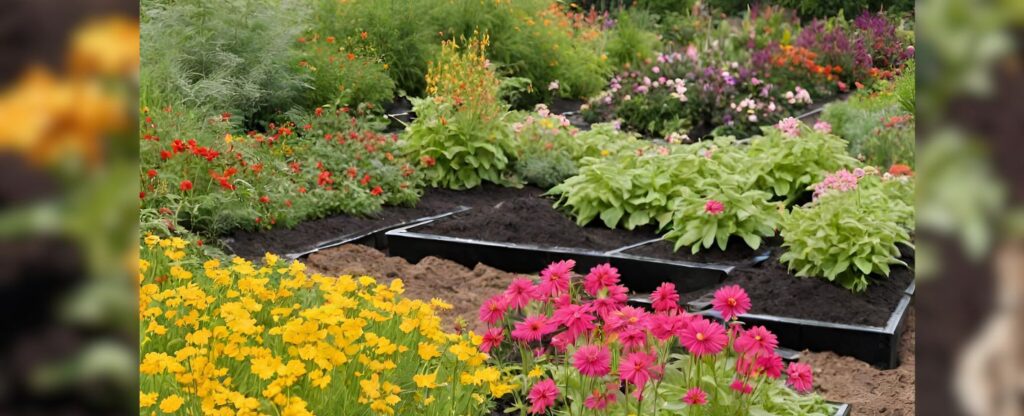
Here are some additional guidelines for effective mulching.
1. Choose the Right Mulch: Opt for organic mulches like straw, wood chips, or shredded leaves, as they not only provide insulation but also break down over time, enriching the soil. These materials create an effective barrier between the soil and the cold air, helping to regulate temperature fluctuations.
2. Apply an Adequate Layer: Spread a layer of mulch around the base of your plants, covering the soil to a depth of 2 to 4 inches. Ensure that the mulch layer is even and does not come into direct contact with the plant stems, as this can lead to moisture-related issues.
3. Maintain Mulch Thickness: Monitor the mulch layer throughout the winter, as it may settle or decompose over time. Add additional mulch as needed to maintain the recommended thickness.
4. Remove Excess Snow: In areas with heavy snowfall, gently brush off excess snow from the mulch layer to prevent compacting and ensure proper insulation. Avoid heavy shoveling, as this can damage plants.
5. Avoid Overmulching: While mulching is beneficial, excessive mulch can lead to problems like poor drainage and the suffocation of plant roots. Stick to the recommended thickness guidelines.
6. Mulch in Late Fall: Apply mulch in late fall after the ground has cooled but before the first hard frost. This timing allows the soil to retain some residual warmth while preparing plants for winter dormancy.
Pruning and Maintenance
Pruning and maintenance are essential aspects of winter gardening, serving to promote plant health, control growth, and prepare your garden for the challenges of the cold season.
Understanding the importance of these practices and knowing how to implement them effectively can make a significant difference in the well-being of your plants.
A. Why Pruning and Maintenance Matter?
1. Disease and Pest Control: Regular pruning removes dead or diseased plant material, reducing the risk of pests and diseases spreading. It also allows for better air circulation, which can deter fungal growth.
2. Shape and Size Control: Pruning helps maintain the desired shape and size of your plants. This is particularly important for shrubs and trees that may otherwise become unruly or obstructive.
3. Winter Prep: Proper maintenance includes tasks like cleaning up fallen leaves and debris, which can harbor pests and diseases. These actions reduce potential winter hiding spots for unwanted garden visitors.
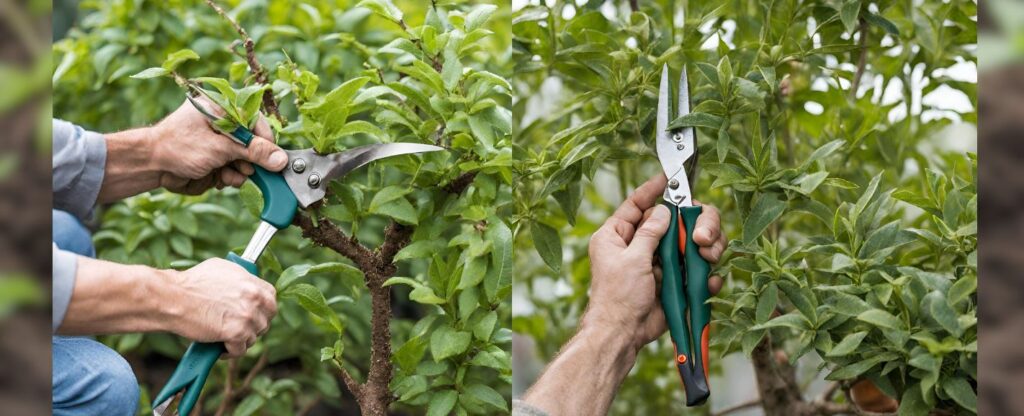
B. Pruning and Maintenance Guidelines:
- Timing: Prune deciduous trees and shrubs during late fall or winter when they are dormant. Avoid pruning in late winter or early spring, as it can stimulate new growth vulnerable to frost damage.
- Tools: Use sharp, clean pruning shears or loppers to make clean cuts. Disinfect tools between plants if you suspect disease issues.
- Deadheading: Remove spent flowers and seed heads to prevent self-seeding and encourage more blooms in the following growing season.
- Remove Dead or Diseased Material: Trim away dead or diseased branches and foliage. Make cuts at a 45-degree angle just above a healthy bud or branch junction.
- Shape Gently: When shaping plants, avoid drastic pruning during winter. Save major shaping for early spring or late winter.
- Avoid Pruning Frost-Damaged Plants: If a plant has suffered frost damage, wait until late winter or early spring to prune it. This allows you to assess the extent of damage more accurately.
- Clean Up: Rake and remove fallen leaves and debris regularly to prevent the buildup of hiding spots for pests and diseases.
- Mulch and Protect: After pruning and maintenance tasks, replenish mulch around the base of plants to insulate the soil and protect roots.
These practices not only contribute to the longevity of your plants but also help maintain the overall aesthetics and functionality of your garden throughout the colder months.
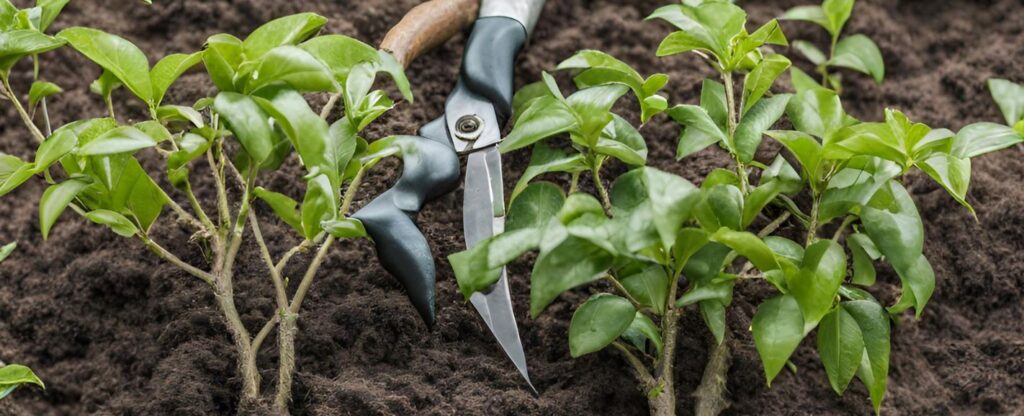
Monitoring and Responding to Pest Issues
Effective pest management is a year-round commitment for gardeners, and winter is no exception. While many pests and diseases may appear to be dormant in the colder months, they can still pose a threat to your garden's health.
Monitoring and responding to these issues during winter are essential to ensure your plants thrive when spring arrives.
In addition, here are some common pests and diseases to watch out for during winter, along with strategies for addressing them:
- Spider Mites: Inspect the undersides of plant leaves for tiny, web-spinning mites. Look for yellowing or stippling on foliage. Address by pruning and removing infested plant parts, or consider using insecticidal soap or neem oil according to product instructions.
- Aphids: Check the tips and undersides of new growth for clusters of small, soft-bodied insects. Address by pruning and disposing of heavily infested plant parts, or use a strong jet of water to dislodge aphids or apply insecticidal soap as directed.
- Snow Mold: Look for patches of moldy, matted grass or other plants under the snow. Address by improving air circulation in your garden through pruning and thinning plants. Remove snow when possible to discourage mold growth.
- Powdery Mildew: Inspect plant leaves for white, powdery spots or coatings. Address by pruning affected plant parts, improving air circulation, and applying appropriate fungicides according to the product's instructions.
- Rodent Damage: Check for gnaw marks on tree bark and around the base of plants, as well as burrows or tunnels in the soil. Address by using physical barriers like tree wraps to protect tree trunks, setting traps, or using deterrents like motion-activated lights.
- Scale Insects: Examine plant stems and leaves for small, waxy bumps or scales. Address by scraping off scales with a soft brush or cloth, or applying horticultural oil during the dormant season according to product instructions.
- Winter Moths: Monitor for signs of caterpillars, such as chewed foliage or small green larvae on branches. Address by using sticky traps or applying insecticides as recommended for caterpillar control.
Remember: early detection and prompt action are key to effective pest management during the winter months.
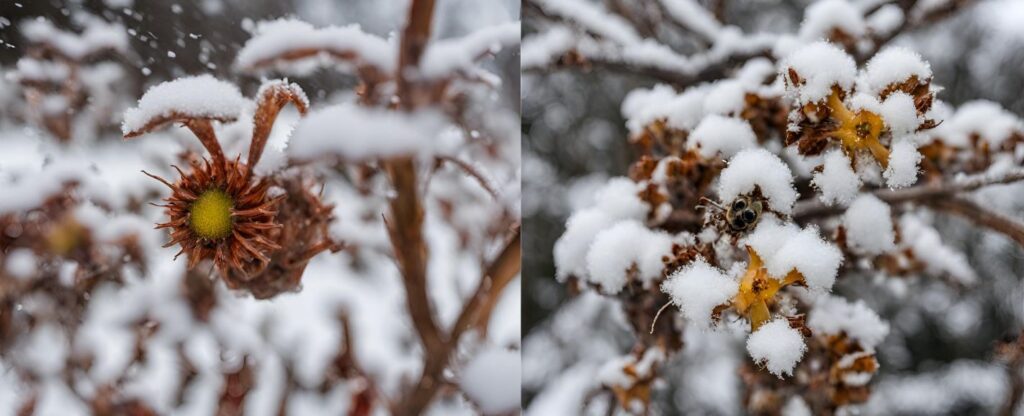
Preparing for Spring
As the wintry embrace begins to thaw, your diligent care and attention in tending to your garden during the cold months are about to yield delightful rewards.
The efforts you've invested in monitoring, protecting, and nurturing your garden are not just safeguards for winter but the stepping stones toward a vibrant spring garden. With pests and diseases addressed, plants pruned and maintained, and soil health preserved through mulching and temperature control, you've set the stage for a garden that will burst forth with life when spring arrives.
The benefits of your winter efforts will soon be evident in the lush foliage, vibrant blooms, and abundant harvests that await. Here are some key takeaways to ensure your garden thrives as the seasons change:
- Monitor and address pests and diseases promptly.
- Prune and maintain your plants for vigorous spring growth.
- Use proper mulching and temperature control to preserve soil health.
- Prepare for the vibrant garden that awaits with anticipation.
- And finally - plant some new plants in your spring garden that are not totally neglected and soulless due to the winter months.
This might seem like a lot to process, but implementing our Ode à la Rose guiding advice in your garden will ensure its longevity and beauty without exaggerating efforts in your spring gardening time.
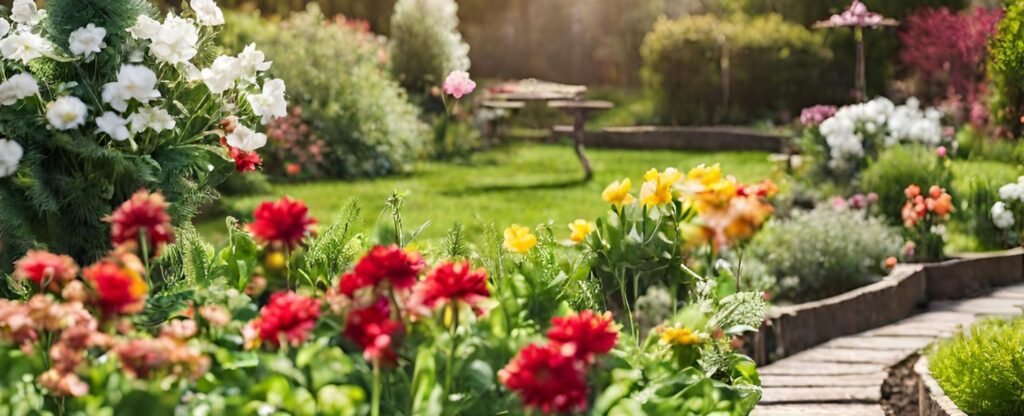
Take each advice one step at a time, and you’ll finally understand them as a wholesome piece of your garden’s hygiene and apply them without any fuss in no time!
Happy gardening, and remember, we are always here, whether it’s advice or an order you need from us. We are prompt and deliver everything with our seamless and contactless nationwide same-day delivery - because we truly appreciate the freshness of flowers and the sentiments you need to be sent, whether it’s a birthday, anniversary, or just because.





